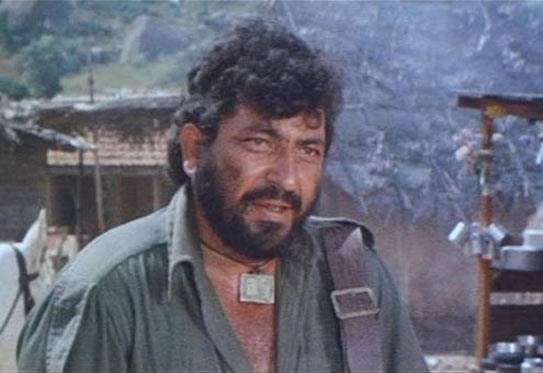
The praise that Shekhar Kapoor has showered on “Sholay” is one that is echoed not only by film lovers from the sub-continent, but from around the world. No film captures the blockbuster appeal and flamboyant storytelling pattern of Indian cinema quite like Ramesh Sippy’s classic.
Though the film was inspired by other classic films, such as Akira Kurasawa’s “Seven Samurai” and the spaghetti westerns of Sergio Leone, it remains an original in its own right. The simple story of a vengeful landlord who hires two good-hearted rogues to defend his village and capture a notorious bandit has entered popular culture and remained stirring nearly four decades after its original release.
But “Sholay” was not predestined to become the movie it has become. At the outset the production was plagued by problems. It took over two years to make and the casting of Amitabh Bachchan in the lead role as Jai along with Amjad Khan as the iconic Gabbar Singh was not a sure bet.
Believe it or not, Shatrughan Sinha was first considered for the role that eventually went to Bachachan simply because “the Big B” was considered box-office poison at that time. And even more astonishing, Danny Denzongpa was initially offered the role of Gabbar Singh which eventually to Amjad Khan who, as we all now know, immortalised the character.

Would the film have been a classic if these alternate castings had actually taken place? Hard to say and even harder to imagine. But aren’t we all glad that the film turned out the way it did.
The film has everything in it, or all the ingredients that make a great film. Terrific direction by Ramesh Sippy, a sharp script by Salim Khan and Javed Akhtar, beautiful cinematography by Dwarka Divecha and classic songs by R.D Burman, including “Yeh Dosti” and “Mehbooba Mehbooba”.
With unforgettable characters including Dharmendra’s Veeru, Hema Malini’s chatterbox Basanti, Jaya Bhaduri’s quiet and cold portrayal as Radha, along with Sanjeev Kumar as the stern yet dignified Thakur Baldev Singh, the film has given us a veritable gallery of Bollywoods best dialogue.
The most memorable character in the film is, of course, the dacoit Gabbar Singh, played brilliantly by Amjad Khan. The first genuinely evil character in Indian cinema, without pity or remorse, he kills and terrorises all those that oppose him or get in his way. Said to have been inspired by a real life dacoit from the 1950s, Gabbar Singh takes sadistic pleasure in torturing his unfortunate prey simply for his own vanity. The character was also strongly inspired by the character Frank played by Henry Fonda in Sergio Leone’s “Once Upon a Time in the West”.
Sadly for Amjad Khan, he could never escape the shadow of Gabbar Singh till the day he died. Even though he acted in a number of other classic films including “Qurbani”, “Laawaris” and “Muqaddar Ka Sikandar”, Khan will forever be known as Gabbar. He himself said that “From here, the only place I can go is down. This cannot be repeated”.

Ramesh Sippy, the director, could also relate to the above quote. He could never top Sholay’s success and the film will probably remain his epithet. After an initial lukewarm reception, the film became a sensation and ran in theatres for over five years. Over the passage of time, it has remained the gold standard by which box-office success is judged in India.
Even though the film didn’t win any of the major awards in the year that it was released, it did win a number of other honors as the years passed. At the 50th Annual Filmfare awards it was designated as the Best Film of 50 Years. It was declared “Film of the Millenium” by BBC India along with topping the British Film Institute’s rank of “Top Ten Indian Films”.
It has been imitated a number of times, including the forgettable “China Gate” directed by Rajkumar Santoshi in 1998 and the even more horrendous “Aag” directed by Ram Gopal Varma in 2007. Although it’s said that imitation is the best form of flattery, no film has, as yet, flattered “Sholay”. Still the quintessential “Curry Western”, it can still be enjoyed no matter how many times you watch it.
Raza Ali Sayeed is a journalist at Dawn.com































